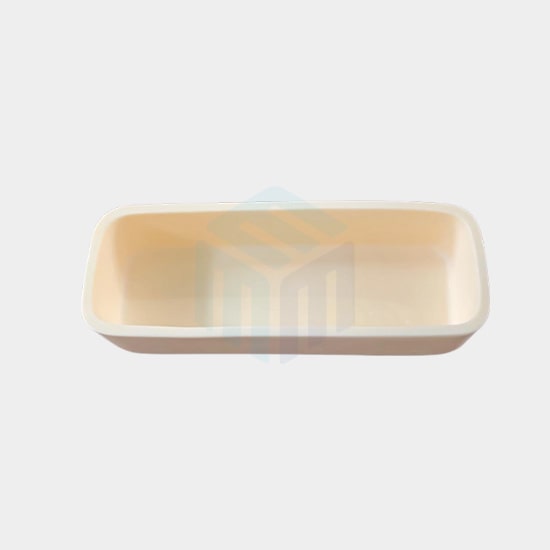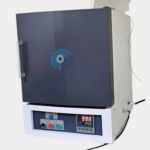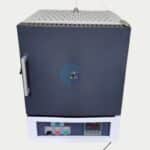When working in high-temperature laboratory environments, selecting the right crucible material is crucial for achieving accurate results and ensuring long-term performance. Alumina crucibles are a popular choice due to their excellent thermal stability, chemical resistance, and mechanical strength. In this guide, we’ll explore the different types of alumina crucibles available, helping you choose the most suitable option for your specific laboratory application.
Alumina crucibles come in various types based on their composition, manufacturing process, and intended applications.
Types of Alumina Crucibles:
Alumina crucibles come in various shapes, sizes, and purity levels to suit different research and industrial needs. Each type is designed to withstand specific temperature ranges and chemical exposures. Understanding these variations helps in selecting the right crucible for efficient and safe lab operations. Here are the types of alumina crucibles:
Alumina Crucibles By Purity
Alumina crucibles are available in different purity grades, commonly ranging from 85% to 99.8% alumina content. Higher purity crucibles offer better thermal stability, corrosion resistance, and minimal contamination—making them ideal for high-precision applications in laboratories and research.
-
High Purity Alumina Crucibles (99.5% or higher):
- Applications: Used in applications requiring high resistance to chemical attack, high thermal stability, and minimal contamination, such as in analytical laboratories and high-temperature processes.
- Properties: Excellent thermal and chemical stability, high mechanical strength, low thermal conductivity.
-
Standard Purity Alumina Crucibles (85% – 99%):
- Applications: Suitable for a variety of industrial applications where extreme purity is not critical.
- Properties: Good thermal and chemical stability, but with some level of impurities.
Alumina Crucibles By Shape and Form
Alumina crucibles come in various shapes and forms such as cylindrical, conical, and boat-shaped designs to suit different laboratory needs. The choice of shape affects heat distribution, ease of handling, and suitability for specific processes like melting, calcining, or ashing.
-
Conical Alumina Crucibles:
- Applications: Ideal for processes requiring precise pouring and minimal loss of material.
- Properties: The tapered shape allows for easy handling and pouring.
-
Cylindrical Alumina Crucibles:
- Applications: Commonly used in general laboratory and industrial applications.
- Properties: Straight walls provide uniform heating and easy handling.
-
Rectangular Alumina Crucibles:
- Applications: Often used in specialized applications requiring specific geometries.
- Properties: Rectangular shape provides a larger surface area for reactions or melting processes.
-
Alumina Crucibles with Lids:
- Applications: Used when the containment of volatile materials or reduction of contamination is required.
- Properties: Lids help to minimize contamination and prevent loss of material.
Alumina Crucibles By Manufacturing Process
Alumina crucibles are manufactured using different processes such as pressing, casting, and extrusion, which influence their density, strength, and thermal properties. The chosen manufacturing method ensures the crucible meets specific performance requirements for various laboratory and industrial applications.
-
Pressed Alumina Crucibles:
- Applications: Suitable for high-volume production and cost-effective solutions.
- Properties: Typically have good dimensional accuracy and uniformity.
-
Slip Cast Alumina Crucibles:
- Applications: Used when complex shapes or larger sizes are needed.
- Properties: Allow for more intricate designs and larger crucibles
-
Isostatically Pressed Alumina Crucibles:
- Applications: Ideal for high-stress environments requiring uniform density and high mechanical strength.
- Properties: High uniformity and mechanical strength due to the isostatic pressing process.
Alumina Crucibles By Special Properties
Alumina crucibles with special properties are designed to meet unique application needs, such as enhanced thermal shock resistance, chemical inertness, or high purity levels. These specialized features make them ideal for demanding environments in research and industrial processes.
-
Thermally Stable Alumina Crucibles:
- Applications: Used in applications requiring resistance to thermal shock.
- Properties: Designed to withstand rapid temperature changes without cracking.
-
Chemically Resistant Alumina Crucibles:
- Applications: Suitable for processes involving aggressive chemicals.
- Properties: high resistance to chemical attack and corrosion.
Custom Alumina Crucibles
Custom alumina crucibles are tailored to meet specific size, shape, and performance requirements for specialized laboratory or industrial applications. They offer flexibility and precision to ensure optimal results in unique processes.
- Applications: Tailored to specific requirements of a process or application.
- Properties: Can be designed with specific dimensions, shapes, and properties to meet unique needs.
Selecting the appropriate type of alumina crucible depends on the specific requirements of your application, such as temperature, chemical exposure, and mechanical stress.
Conclusion:
In conclusion, understanding the different types of alumina crucibles—categorized by purity, shape, manufacturing process, and special properties—helps you select the right crucible for your specific laboratory needs. Custom alumina crucibles further enhance versatility, ensuring optimal performance for specialized applications. Choosing the appropriate alumina crucible ultimately improves efficiency, durability, and results in your lab work.
M-Kube Enterprise is an Australian company catering customized laboratory products, laboratory consumables, and laboratory solutions in Australia, India, New Zealand, Singapore, Malaysia, South Korea, Dubai, the Philippines, Indonesia, the USA, and Vietnam.






